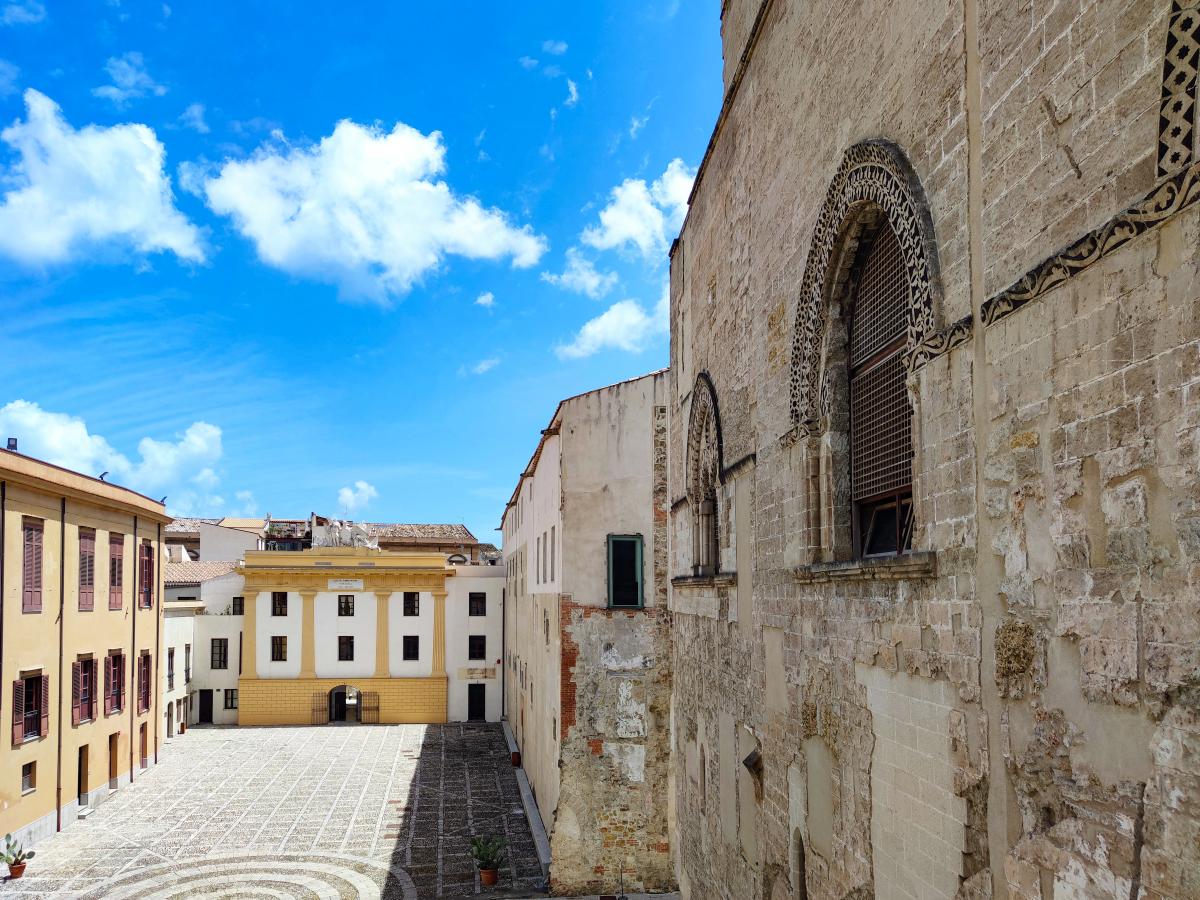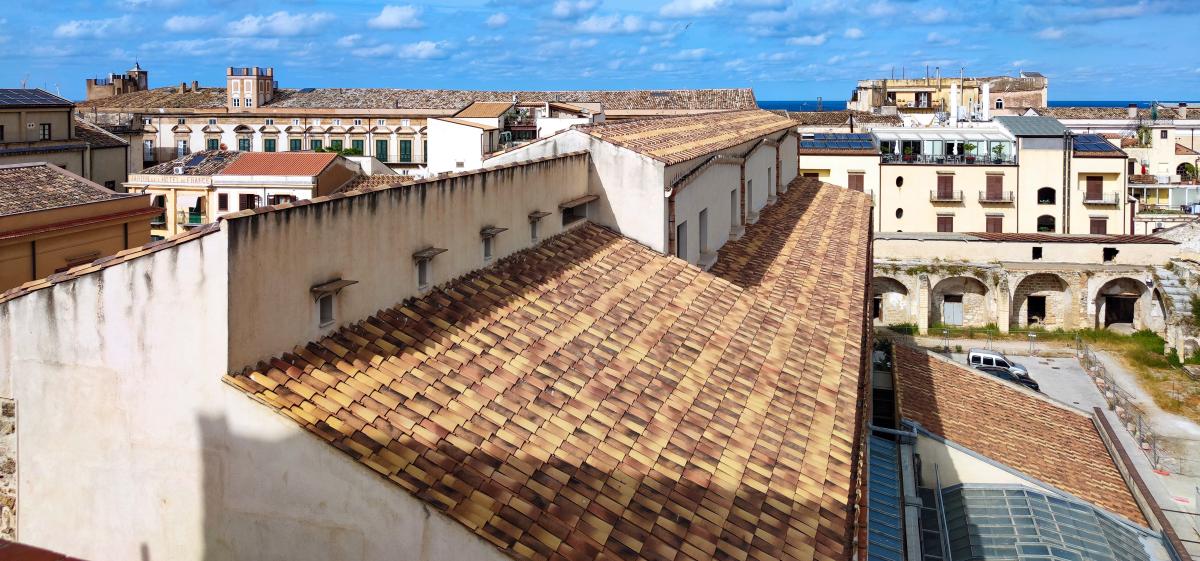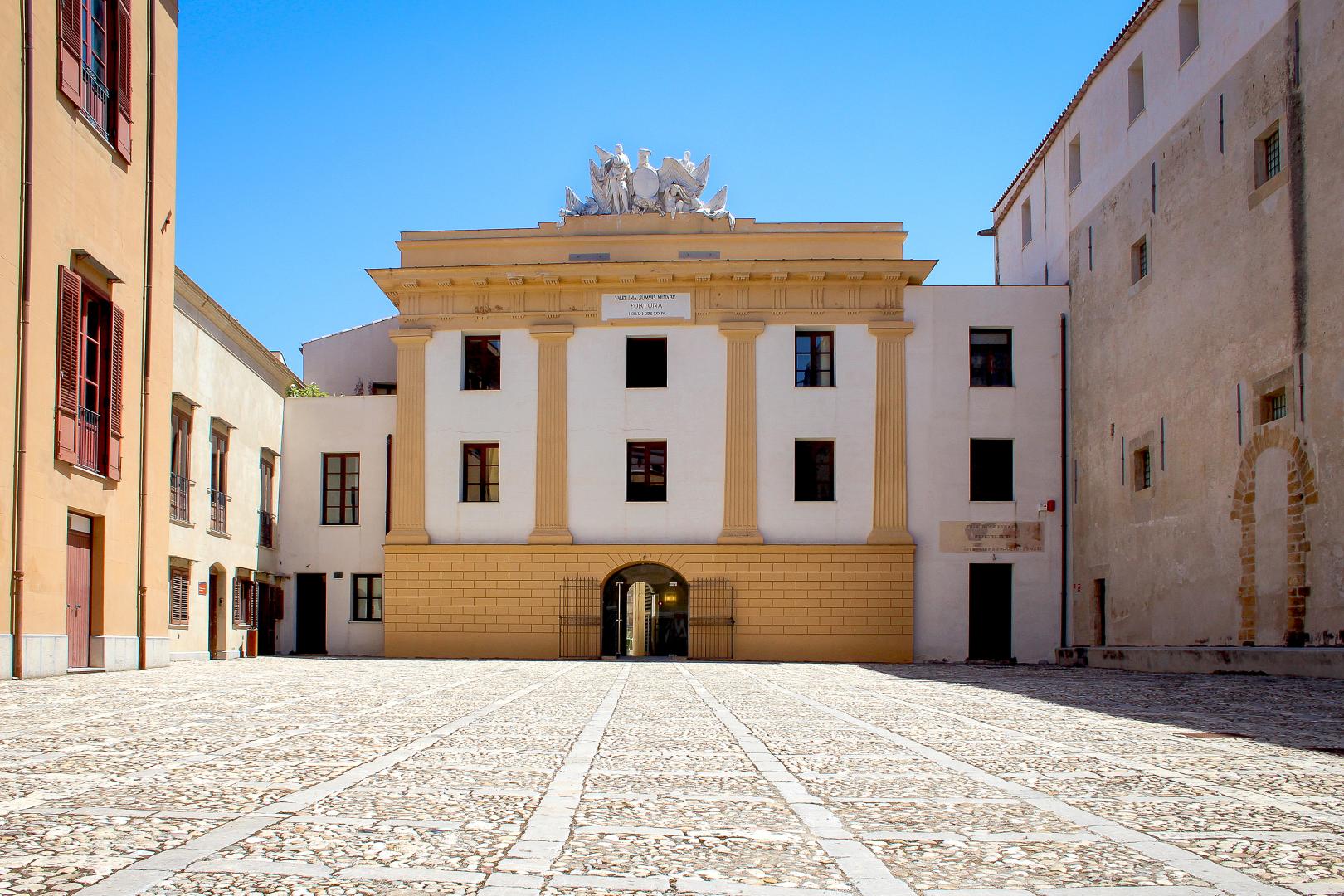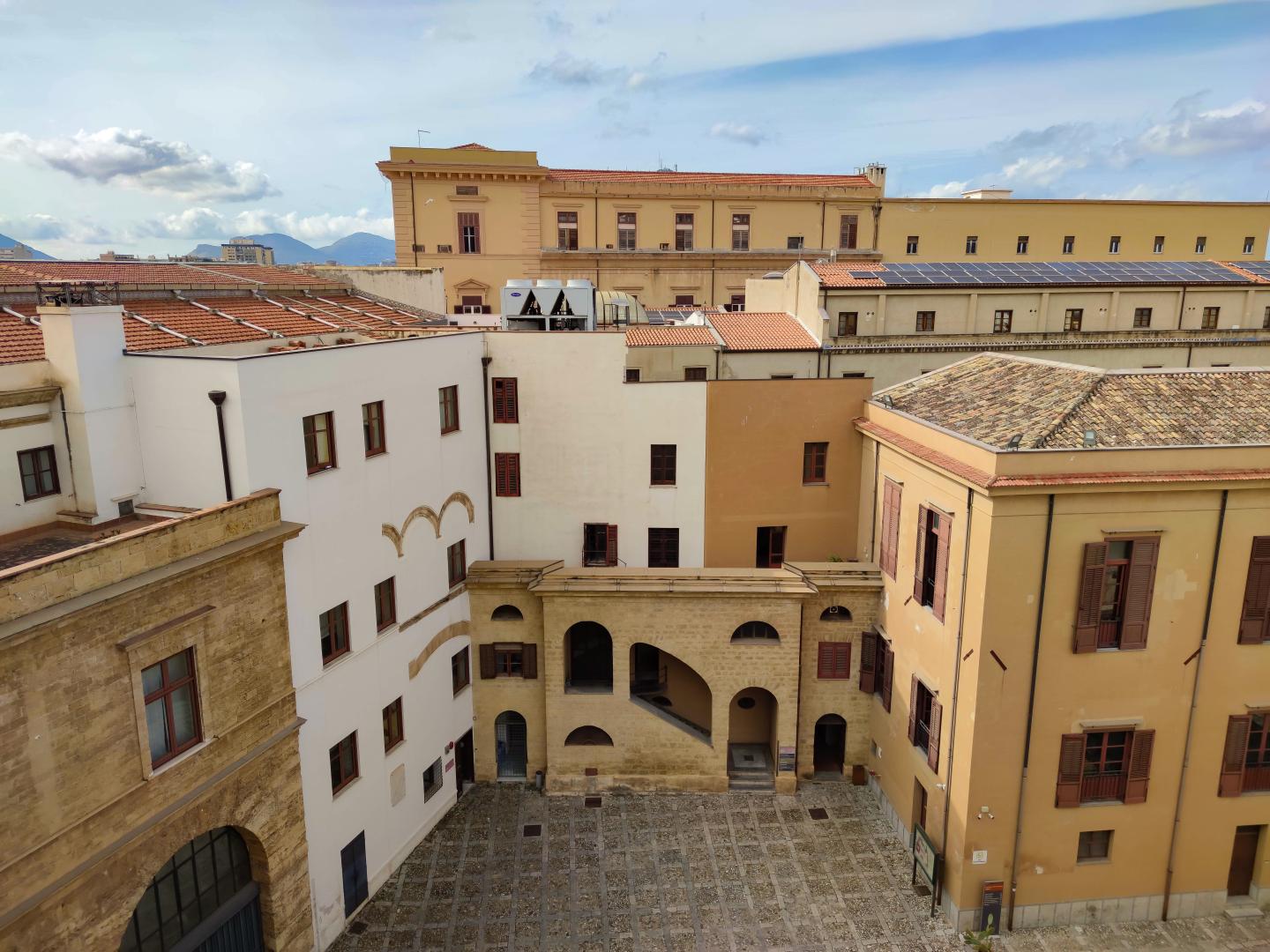
Introduction
The monumental complex of Steri with the fourteenth-century Palazzo Chiaromonte and the annexed historical buildings, rich in precious memories, preserves indelible traces of ancient and modern history of the City of Palermo. A journey that begins in the Middle Ages and ends in the present day.
History
The complex was formed over time around Palazzo Chiaromonte, starting in 1330, the date of its construction. It is a small cluster of historic buildings of considerable value, distributed over a total surface area of approximately 1600 square meters, in the area between Piazza Marina, Vicolo Sant’Uffizio, Vicolo Lo Bianco and via Scopari, to the point of constituting a real small neighborhood in which they are connected to each other via squares and small paved streets.
The monumental complex also includes Palazzo Abatelli, built in the 16th century but remodeled several times, and the Carcere dei Penitenziati (prison of the penitentiaries) dating back to the early 1600s.
Adjacent to Palazzo Chiaromonte is the Church of S. Antonio Abate, the private chapel of the Chiaromonte family, the neoclassical Palazzo del Regio Lotto (mid-19th century) and other small, minor buildings but of equal historical and archaeological interest.
The complex also houses several exhibition spaces, including one entirely dedicated to the large painting La Vucciria by Renato Guttuso on the ground floor of Palazzo Chiaromonte, the Sala delle Verifiche and the Munipa intended for temporary exhibitions.
Nowadays, the Complesso monumentale dello Steri hosts the nerve centre of all the management and administrative activities of the University of Palermo. In fact, within the historic buildings that compose it, in addition to the headquarters of the rectorate and the general management, all the offices that are part of the administrative machine of the entire University are located.
Historic buildings and exhibits
Opening hours
Open every day with guided tours by a specialized operator:
- 1st March - 31st October: 9:00-20:00 (last admission 19:00)
- 1st November - 28th February: 9:00-18:00 (last admission ore 17:00)
Tickets
The site can be visited by purchasing the ticket at the entrance of Complesso Monumentale dello Steri or online
Accessible to people with reduced mobility













